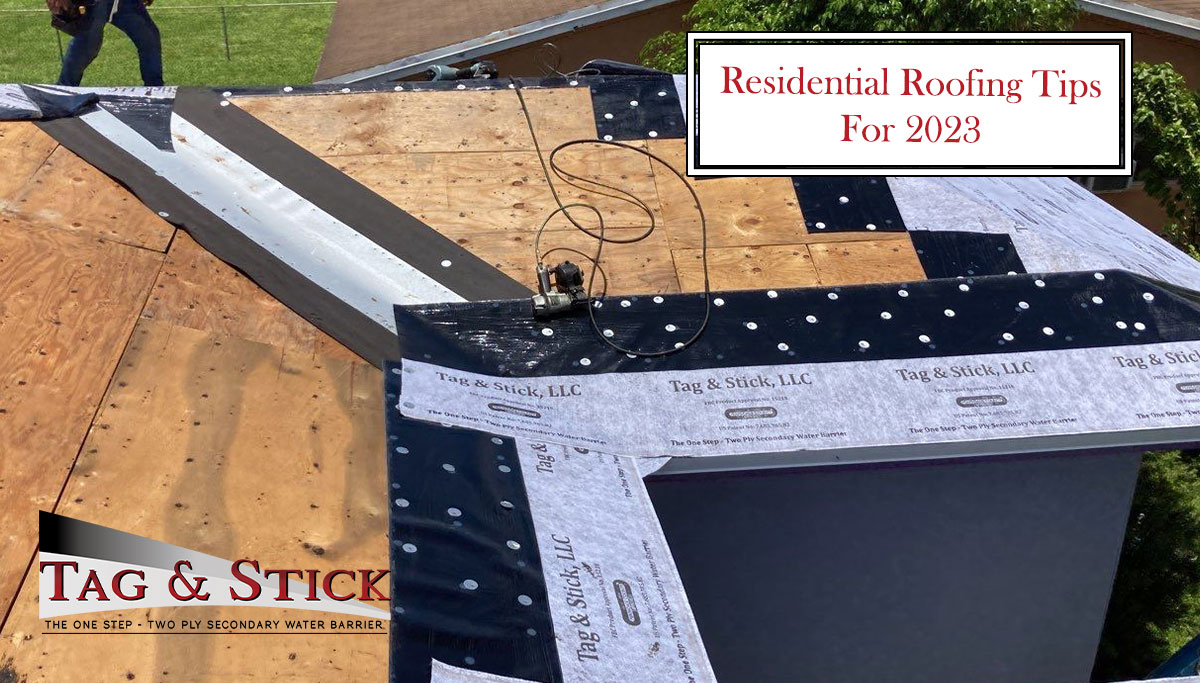Residential Roofing Tips For 2023

With the new year upon us, it may be time to look at how to update your residential roof. There are various ways you can improve your roofing in the new year. Finding the right roofing contractor is half the battle. Choosing durable but cost-effective materials is the other half. The right materials can help protect your property from various weather conditions.
Finding The Right Roofing Contractors
When it comes to repairing or replacing your roof, you will need to find knowledgeable and licensed roofing contractors. It can be difficult to find a company you can work with, especially one who not only understands your needs but also understands the importance of using the best quality supplies.
Utilizing roofing contractors who focus on the safety of staff helps. There are questions that you can ask before signing a contract with your chosen contractor. These questions include
- Asking if they are properly insured.
- Asking if all the roofing contractors are licensed.
- Finding out what their warranty period is.
- Asking how long they have been in the roofing industry and if you can contact past references.
- Finding out if they are certified by manufacturers for various roofing materials (such as tiles or underlayment).
- Asking if they use weather-resistant materials (such as Tag & Stick Underlayment) during the installation process.
If your roofing contractor can’t confidently answer any of the above, it may be time to find a new residential roofer. You can’t take risks when it comes to your residential property’s roof.
Materials Used In Residential Roofing
When you are replacing your residential roof, you want to make sure the contractor you have chosen is using a product that aligns with both your needs and budget. Utilizing suitable materials will ensure that you’re not only protecting your property but also its inhabitants.
· The Type Of Roof Covering Used
The roof coverings used in a residential roofing project can depend on both the budget and aesthetic of the homeowner. There are a variety of different types of roof coverings, each with its own pros and cons. These can range from lifespan to cost. Different types include concrete or clay tile, shingles, slate, and metal tiles. Finding a roofing material that not only works with your budget and is durable will help improve your roofing in the upcoming year.
· Finding The Right Underlayment
Getting the right roofing underlayment can make or break your roofing. It’s a necessary component to ensure that water and mold don’t permeate into your home from the roof. There are a variety of underlayment available on the market, including asphalt-saturated felt, modified asphalt, and even non-bitumen synthetic.
Tag & Stick is another type of code-approved underlayment. It’s a self-adhered 2ply inorganic modified underlayment that’s durable and easy to use on all roofing slopes. It’s also a lot safer for roofing contractors to use during the installation process.
Why Does The Underlayment Matter For Residential Roofing?
While less visible than the type of tile used, it’s an important part of your home’s roof. There are many steps involved in roofing underlayment installation; each step is there to help protect the inside of your home as well as protect your roof from both internal and external elements.
By changing one step in the roofing process and switching to Tag & Stick, you’ll improve your roofing in the new year. For more information about Tag & Stick underlayment or to find a distributor near you – call us today at 954-255-3107!